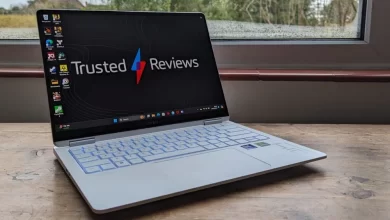How Do I Create a QR Code: Basics, Design, and Best Practices

Did you know that QR code scans increased by 28% in the last year alone? If you’re wondering how to create your own QR code, look no further. In this post, we’ll dive into the simple steps to generate a personalized QR code for your business, event, or personal use.
With the rising popularity of contactless interactions, having your unique QR code can boost engagement and convenience for your audience.
Stay tuned to discover an easy and effective way to make your mark with this modern technology.
Basics and Functionality of QR Codes
Definition and Operation
QR codes, short for Quick Response codes, are two-dimensional barcodes that store data vertically and horizontally. Users can scan these codes using a smartphone camera to access information instantly.
Historical Background
Initially created in 1994 by Denso Wave, a subsidiary of Toyota, QR codes were used for tracking automotive parts. Over time, they evolved into a versatile tool for various industries.
Benefits of QR Codes
- Efficiency: QR codes allow quick access to information without the need for manual typing.
- Contactless Interaction: QR codes facilitate touch-free transactions and interactions.
- Versatility: They can be used for marketing campaigns, event tickets, payment systems, and more.
Common Uses of QR Codes
- Marketing Campaigns: QR codes are widely used in marketing to drive engagement and conversions. By scanning the code, users can access promotional offers, product information, or exclusive content, enhancing brand interaction and customer experience.
- Event Ticketing: QR codes streamline the ticketing process for events such as concerts, movies, and conferences. Attendees can easily access their tickets by scanning the code on their smartphones, reducing the need for physical tickets and simplifying entry procedures.
- Contactless Payments: QR codes facilitate seamless transactions by enabling contactless payments through mobile payment apps. Users simply scan the code displayed at checkout to complete their purchase securely and conveniently.
- Product Packaging: QR codes on product packaging provide consumers with instant access to detailed product information, reviews, and usage instructions. This enhances transparency and trust, allowing consumers to make informed purchasing decisions while fostering brand loyalty.
- Digital Menus: QR codes are increasingly used in restaurants and cafes to offer digital menus accessible via smartphones. Customers can scan the code to view the menu, place orders, and make payments, promoting efficiency, hygiene, and convenience in the dining experience.
Designing Custom QR Codes
Importance
Customizing QR codes is crucial for branding, helping businesses stand out and create a unique identity.
The ability to choose colors and designs that enhance QR code visibility is essential. Opt for high-contrast color combinations for better readability.
Tips
To create visually appealing custom QR codes, consider incorporating your brand’s logo or elements to maintain consistency. Utilize TLinky, a user-friendly QR code generator, to design and customize QR codes effortlessly.
How to Create a QR Code: Step-by-Step Guide
Step 1: Choose the Right QR Code Generator
Start by selecting a trusted QR code generator like TLinky, offering customization, tracking, and analytics features. TLinky stands out with its intuitive interface and stellar user reviews, ensuring a seamless QR code creation experience.
Step 2: Register and Log in to TLinky
After selecting TLinky, log in to your account or sign up for free access to its full suite of features.
Step 3: Access the QR Code Creation Page
Upon logging in, navigate to the QR code creation page through the dashboard’s QR Codes menu. This will lead you to the platform where you can begin crafting your unique QR code.
Step 4: Select the QR Code Type and Input the Data
Choose from TLinky’s diverse range of QR code types, including URL, text, contact, Event, vCard, WiFi, and more. Input the relevant information, such as the website URL or text message, to personalize your QR code.
Step 5: Customize the QR Code Design
With TLinky’s customization options, tailor your QR code’s design by selecting colors and adding frames, and style to match your brand aesthetic.
Step 6: Generate, Download, and Test Your QR Code
Once satisfied with the design, click “Generate QR” to create your QR code. After that download the image file easily and conduct thorough testing to ensure seamless functionality across various devices and platforms.
Customizing QR Codes for Various Needs
Types of Customized QR Codes
Customizing QR codes allows individuals and businesses to tailor these digital tools to specific requirements.
Different types of QR codes serve various purposes, ranging from basic information sharing to advanced marketing strategies.
For instance, business cards can have personalized QR codes that link directly to a professional’s contact information.
Examples of Customized QR Codes
For businesses, customized QR codes can be utilized in innovative ways. Event tickets with unique QR codes can streamline check-in processes, while product packaging can incorporate QR codes for easy access to user manuals or promotional content.
For personal use, wedding invitations may feature personalized QR codes linking to couple profiles or event details.
Importance of Tailoring QR Codes
Tailoring QR codes is crucial for ensuring their effectiveness in different marketing campaigns. By customizing the design, content, and destination URL, businesses can enhance brand recognition and engage customers more effectively.
For example, a unique design on a restaurant’s menu QR code can lead customers to exclusive online promotions or loyalty programs.
QR Codes in Marketing Strategies
Enhancing Customer Engagement
QR codes play a crucial role in modern marketing strategies by providing a seamless way for customers to interact with brands.
These codes, when scanned, can lead customers to specific landing pages, promotional offers, or social media profiles.
This direct link between the physical and digital worlds enhances customer engagement significantly.
Boosting Interaction Levels
Through the simplicity of scanning a QR code, customers can access exclusive content, participate in contests, or receive personalized recommendations.
This level of interaction not only captures customers’ attention but also encourages them to take immediate action.
Brands leverage this feature to create a sense of urgency and drive conversions effectively.
Tracking and Analyzing QR Code Performance
Importance of Tracking
Tracking QR code scans and user engagement is crucial for evaluating the effectiveness of marketing campaigns.
By monitoring scan rates, businesses can gauge customer interest and tailor strategies accordingly.
Tracking Methods
QR code generators offer insights into performance metrics. It provides data on scan locations, times, and devices used, aiding in targeted marketing efforts.
Interpreting Data
Analyzing data allows marketers to understand user behavior patterns. By identifying peak scanning times or popular locations, businesses can optimize campaigns for maximum impact.
Best Practices for QR Code Usage
Placement Tips
Consider placing QR codes in high-traffic areas such as storefronts, product packaging, or promotional materials. Ensure they are easily accessible to users for seamless scanning.
To enhance visibility, avoid placing QR codes in locations with poor lighting or where they can be obstructed. Opt for strategic placements that grab attention without overwhelming the design.
Security Measures
Implement security measures like adding a password or encryption to your QR codes to prevent unauthorized access. Regularly monitor and track scans to detect any unusual activity.
Protect your QR codes from tampering by using unique designs or embedded logos. Consider using dynamic QR codes that allow you to edit the content if needed.
Updating and Management Tips
Regularly update the information linked to your QR codes to ensure relevance. Utilize tools that provide analytics on scan rates and user engagement for better optimization.
Manage your QR codes efficiently by organizing them into categories based on campaigns or products. Consider creating a centralized database to easily access and track all your QR code campaigns.
Frequently Asked Questions
Can QR codes be used for commercial purposes?
Yes, QR codes can be used for commercial purposes. Businesses can utilize it for marketing campaigns, promotions, product information, and more to engage customers effectively.
How long are QR codes valid? Do they expire?
QR codes do not have an expiration date inherently. However, their validity depends on the content linked to them. If the linked content is removed or changed, the QR code may become invalid.
What are the benefits of customizing QR codes?
Customizing QR codes enhances brand visibility, increases consumer engagement, and improves recognition. By adding logos, colors, and design elements, businesses can make their QR codes more appealing and recognizable to users.
How can I track and analyze the performance of a QR code?
Tracking QR code performance involves using analytics features to monitor scan rates, location data, time of scans, and user demographics. This data helps businesses evaluate the effectiveness of their QR code campaigns and make informed decisions.
In what ways can QR codes be integrated into marketing strategies?
QR codes can be integrated into marketing strategies through various channels such as print ads, business cards, posters, packaging, digital platforms, and events. They provide a seamless way to connect offline and online marketing efforts for enhanced customer interaction.
Summary
You’ve now grasped the essence of QR codes, from their basic functionality to designing custom codes for various needs.
Generating them on any device and customizing them has become a breeze, empowering you to integrate QR codes seamlessly into your marketing strategies.
By tracking and analyzing their performance, you can optimize their usage effectively. Remember, adhering to best practices ensures maximum impact. Incorporate QR codes thoughtfully in your campaigns, leveraging their versatility to engage your audience effectively.
Monitor their performance closely and adapt your strategies accordingly. Stay creative with your designs and applications, always keeping the end-user experience in mind. Embrace QR codes as a dynamic tool in your marketing arsenal, propelling your outreach efforts to new heights.




